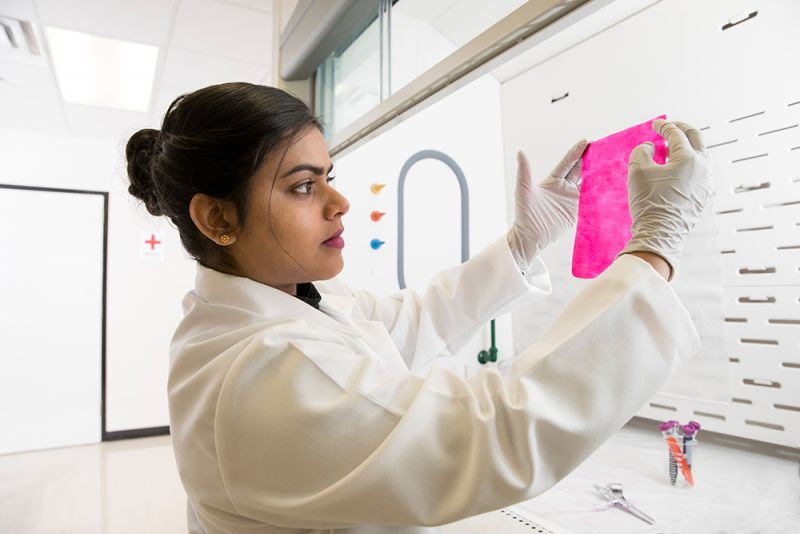New Textile Dyeing Method Reduces Both Water Use and Toxic Dye Discharge
Published on by Water Network Research, Official research team of The Water Network in Technology
The University of Georgia researcher Anuradhi Liyanapathiranage developed a textile dyeing method that makes the entire process more sustainable.
Liyanapathiranage, along with FACS faculty members Sergiy Minko and Suraj Sharma , is researching a better approach using nanocellulose as a carrier of textile dyes that significantly reduces the amount of wastewater and toxic chemicals.

Anuradhi Liyanapathiranage inspects a dyed textile. (Image source: Nancy Evelyn/UGA)
Through a process of homogenization, cellulose, a readily available natural polymer found in the cell wall of green plants, is converted into a hydrogel consisting of nanocellulose fibers.
In this method, researchers dye the nanocellulose hydrogel instead of dyeing the fabric. Compared to cotton fibers, nanocellulose fibers have more surface area with high reactivity, allowing for more efficient attachment of dye molecules.
“My aspiration in life is to make social transformation through science,” Liyanapathiranage said. “Over the past decades, the development of material science has contributed to advances in electronics, nanotechnology and sustainable technologies. I’ve embraced research that enables advancing sustainable materials and sustainable technologies for industry.”
Using this technique, UGA researchers have been able to reduce the water needed to dye 1 kilogram of cotton from 19 liters to just 1.9 liters. Recent analysis also indicates a 60% reduction of dye discharge.

Anuradhi Liyanapathiranage inspects a dyed textile. (Image source: Nancy Evelyn/UGA)
Liyanapathiranage and the FACS team said they’re excited about the potential impact the research can have on the textile industry. They are now looking at ways to upscale the technology to make it applicable to the industrial production process.
UGA is the ideal place to make it happen, Liyanapathiranage said, based on its reputation for groundbreaking research bringing new products to market.
“With the emerging trends on environmental pollution and population growth, sustainable technologies are the key to accomplishing viable socio-economic development,” she said. “I’m confident that our research projects will have a direct contribution to sustainable development, and that we will able to make a remarkable impact on the world with our innovations and discoveries.”
Source: UGA Today
Media
Taxonomy
- Industrial Wastewater Treatment
- Industrial Water Managment
- Toxins
- Dyes & Pigments
- Fibers & Textiles
- Textile Machinery
- Textile